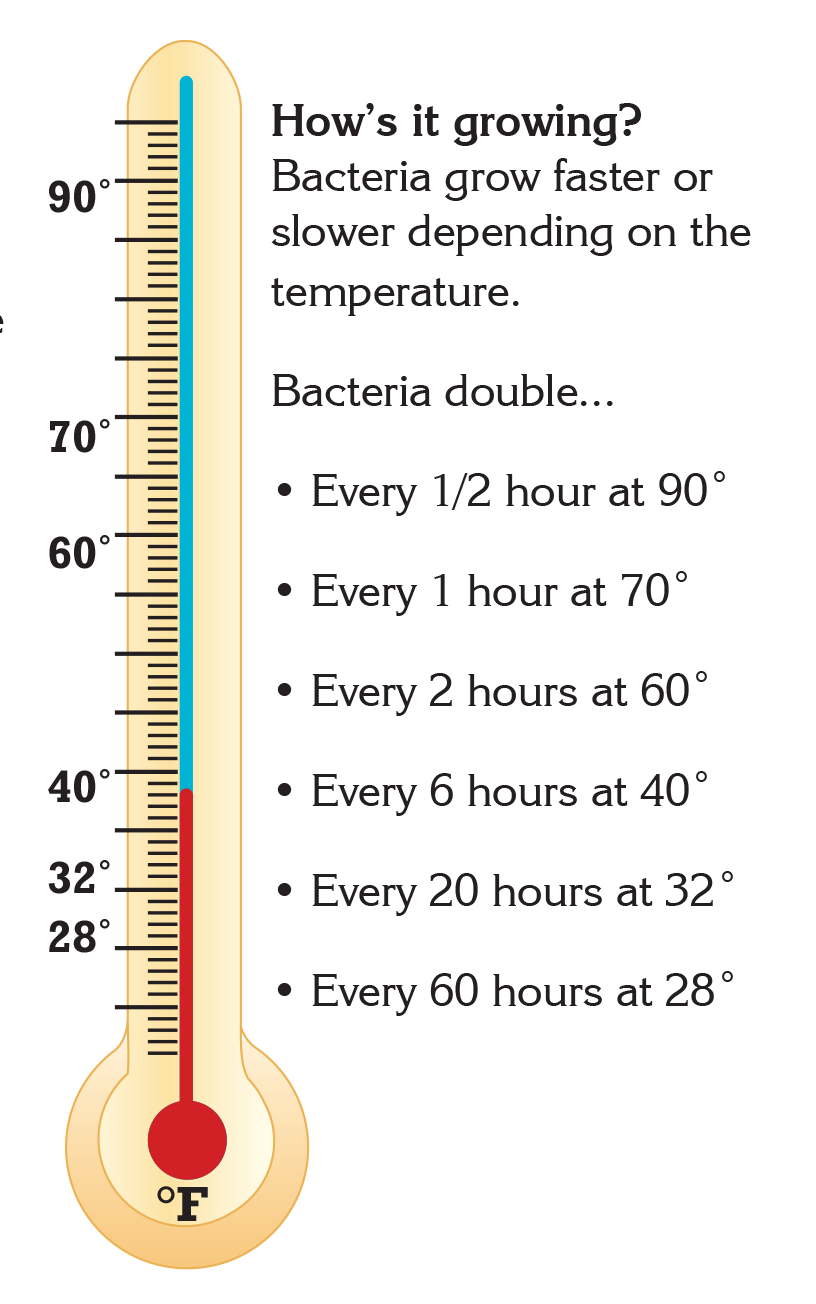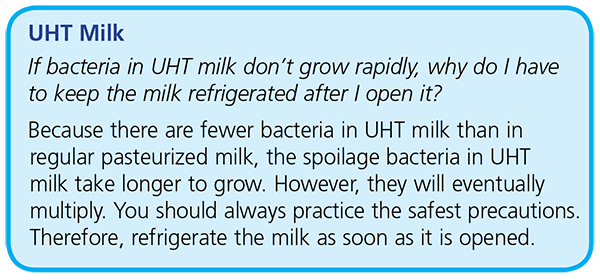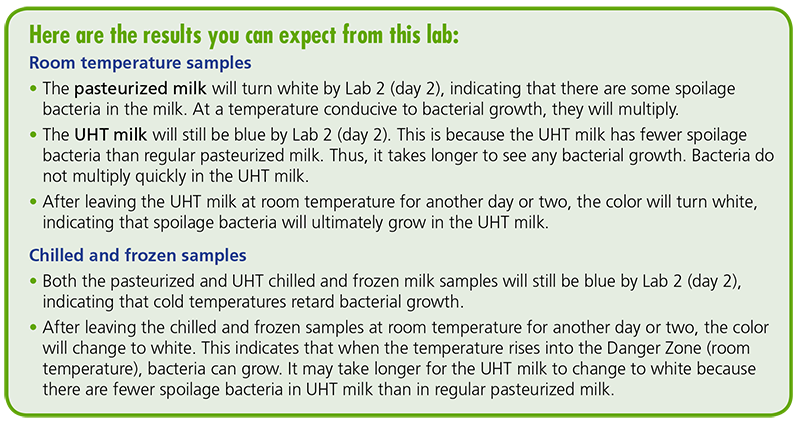Blue's the Clue: Souring Milk for Science (Grades 9-12)
This lab introduces students to the effect temperature has on reducing and controlling the growth of bacteria. Students will use conventionally pasteurized and ultra-high-temperature (UHT) milk to observe how different temperatures (hot, room temperature, cool, and freezing) affect the growth of spoilage bacteria. They will also learn about the importance of pasteurization in keeping food safe.

Background
Lesson Activities
Recommended Companion Resources
Credits
Author
Food and Drug Association (FDA) and National Science Teaching Association (NSTA)
Acknowledgements
The Science and Our Food Supply Curriculum was brought to you by the Food and Drug Administration Center for Food Safety and Applied Nutrition and the National Science Teaching Association.
- FDA Education Team Leader Food Safety Initiative: Marjorie L. Davidson
- FDA Science and Our Food Supply Project Director: Louise H. Dickerson
- FDA/NSTA Associate Executive Director and Science and Our Food Supply Program Director: Christina Gorski
- FDA/NSTA Science and Our Food Supply Program Assistant: Jill Heywood
Option B of the lab activity was adapted by Debra Spielmaker and Utah Agriculture in the Classroom.
Sources
Standards
Indiana Content Area Standards
-
English Language Arts.Grade 9-10.RV.1
Acquire and accurately use academic and content-specific words and phrases at the college and career readiness level; demonstrate independence in gathering vocabulary knowledge when considering a word or phrase important to comprehension or expression.
- Vocabulary in Literature and Nonfiction Texts.9-10.RV.3.2: Determine the meaning of words and phrases as they are used in a nonfiction text, including figurative, connotative, denotative, and technical meanings; evaluate the effectiveness of specific word choices on meaning and tone in multiple and varied contexts.
-
English Language Arts.Grade 9-10.SL.1
Listen actively and adjust the use of spoken language (e.g., conventions, style, vocabulary) to communicate effectively with a variety of audiences and for different purposes.
- Comprehension.9-10.SL.3.2: Evaluate a speakers perspective, reasoning, and use of evidence and rhetoric, identifying any fallacious reasoning or distorted evidence.
- Discussion and Collaboration.9-10.SL.2.1: Initiate and participate effectively in a range of collaborative discussions on grade-appropriate topics, texts, and issues, building on others ideas and expressing personal ideas clearly and persuasively.
-
English Language Arts.Grade 11-12.RN.1
Read a variety of nonfiction within a range of complexity appropriate for grades11-CCR. By the end of grade 11, students interact with texts proficiently and independently at the low end of the range and with scaffolding as needed for texts at the high end of the range. By the end of grade 12, students interact with texts proficiently and independently.
- Key Ideas and Textual Support.11-12.RN.2.1: Analyze what a text says explicitly as well as inferences and interpretations drawn from the text by citing strong and thorough textual evidence to support and explain how the evidence develops the analysis.
-
English Language Arts.Grade 11-12.SL.1
Listen actively and adjust the use of spoken language (e.g., conventions, style, vocabulary) to communicate effectively with a variety of audiences and for different purposes.
- Comprehension.11-12.SL.3.2: Evaluate a speakers perspective, reasoning, and use of evidence and rhetoric, as well as assessing stylistic choices such as word choice, points of emphasis, and tone.
- Discussion and Collaboration.11-12.SL.2.1: Initiate and engage in a range of collaborative discussions on grade-appropriate topics, texts, and issues, building on others ideas and expressing personal ideas clearly and persuasively.




